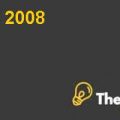Introduction:
In the beginning of the year 2014, the Willerst College faced some serious flu epidemic which had affected more than half of the college’s population. Students were not only the ones affected but the faculty and support staff were also affected from this epidemic. Classes were abandoned as well which gained the attention of local media towards this issue.The reputation of Willerst College and the management especially Mr. Smith has been damaged due to this adverse health condition of the college’s population. In order to prevent the students, faculty and local community Smith decided to arrange a flu shot program.Hedecided to arrange the flu shot program as it was arranged by another university named Ballou University. The flu shot program of Ballou Universitywas very successful mainly due to the marketing and management of program. In order to efficiently and effectively manage the flu shot program, Mr. Smith had taken help from a former student who is extremely successful in the operations management field.
Problem Statement:
Mr. Smith is finding it difficult to determine the appropriate number of stations, number of servers and the cost per server. It can be argued that all these factors are very critical and crucial for the success of the flu shot program. Had the wrong number of stations and servers being maintained, it is highly likely that either the cost of the program will increase or the effectiveness of the program will decrease.
Out foxing the Flu Harvard Case Solution & Analysis
Step one:
The appropriate number of stations based on hourly arrival rate is presented in exhibit one, the appropriate number of stations is calculated by dividing the arrival rate per hour by the average number of people that could be handled by each station.
Step two:
The appropriate number of servers, cost per server andtotal cost is computed and presented in the exhibit two. Number of servers is calculated by multiplying the number of stations with the number of persons required to operate in each station. On the other hand, the cost per server is calculated by multiplying the appropriate number with the cost per hour. The total cost of all servers is approximately $12,000.
Step three:
Number of stations based on the allowing lines is calculated in step three and the maximum line length is also calculated because of the fact that number of stations is dependent on maximum line length. Maximum line length is calculated by deducting the arrival rate from the service rate. The number of stations is computed by dividing the maximum line length by the average number of people that could be handled by each station. The number of stations and maximum length line is presented in exhibit three.
Step four:
Number of servers, cost per server and total cost is presented in exhibit four and it is based on the number of stations based on the allowing lines. Number of servers is calculated by multiplying the number of stations with the servers required in each station and the cost is computed by multiplying the number of servers with the average cost per server per hour................
This is just a sample partical work. Please place the order on the website to get your own originally done case solution.













